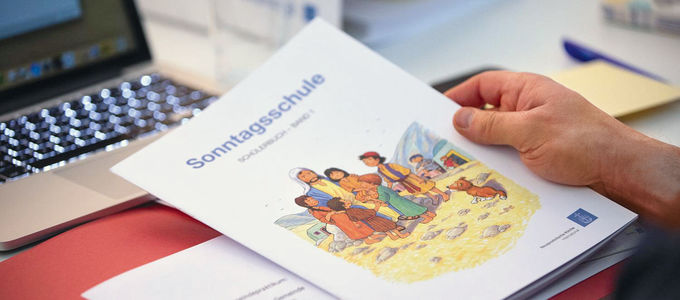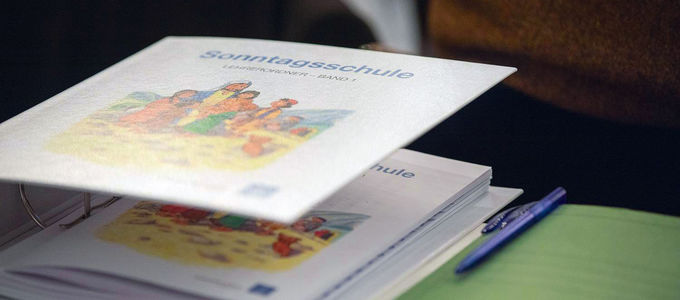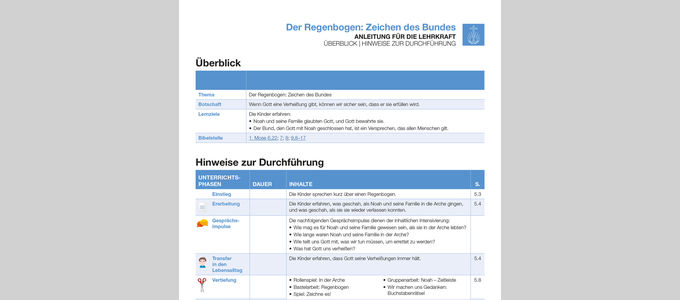
Abbreviations like CTM have the advantage of conveying content without constantly having to repeat a long series of words. To make a long story short, the new textbooks for Sunday School are now also being introduced in Europe.
As of the school year 2019/2020 teachers in Europe will be making use of the new teaching materials for Sunday School. The lessons boast a modern design, and contain a great deal of contemporary material that is well suited to introduce children to their faith in an age-appropriate manner. Here we take a moment to present the new Sunday School format and the steps involved in its creation.
Sunday School—what is that actually anyway? Instruction in the New Apostolic Church is organised into stages. First of all, there is pre-Sunday School, which is designed for children of preschool age. This stage of instruction is more playful, and involves telling Bible stories to the children orally. The next phase, namely Sunday School, is intended for children between the ages of six and nine (or ten), that is, for children of primary school age. In terms of design and content, it is adapted to religious instruction as taught in primary schools, but has its origins in congregational instruction.
The next step is religious instruction, which is offered in a manner analogous to school instruction. This step serves as a binding step between Sunday School and confirmation instruction.
Structure of the new Sunday School material
The new teaching material for Sunday School was designed by the District Church of Canada, and has been adapted for the German and French-speaking areas by a steering group. The objective was to adapt the teaching materials to all regions of the New Apostolic world such that it could even be applied by teachers who have little or no pedagogical experience. For the purposes of planning their lessons, teachers are given access to the Media Portal, and if applicable, to a teacher folder containing the lesson plans for each school year. The individual lesson drafts have the following structure: each lesson begins with an overview page. Here the teacher is given an idea of the structure and content of the individual lessons at a glance. The overview page contains the title, a message that captures the core content of the lesson, differentiated learning objectives, and the biblical passage that serves as the basis for each lesson.
The teacher also receives detailed, step-by-step information on how to go about lessons. The most striking innovation is the multitude of methodological lesson elements, namely activities, which playfully deepen the content being taught.
Content of the new Sunday School material
The overarching learning goals of Sunday School are to become acquainted with God and His works, to become acquainted with the New Apostolic Church, to grow in faith, and to awaken the joy of fellowship. Every Sunday School lesson is based on a biblical story or other biblical content, which is then retold in a language suitable for children. To get started, the teacher is given a number of tips on how to lead the children into the lessons and capture their attention. In the implementation of the lesson, the teacher is guided by discussion points that further develop the biblical content.
A real-life application is intended to bring the content they have learned into the world of the children. The teacher makes use of one or two activities, such as crafts or puzzles, to deepen the children’s understanding of the content. These activities are thematically and methodologically diverse, which allows them to be used by different age groups.
Part of the pedagogical concept is to involve parents and family members by way of a Take Home Page that the children can discuss at home with their family. The child-appropriate layout and the corresponding illustrations will certainly bring much joy to children and teachers alike, both in class and at home.














